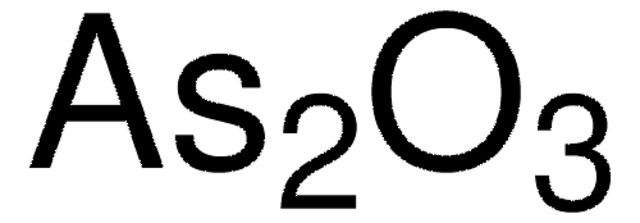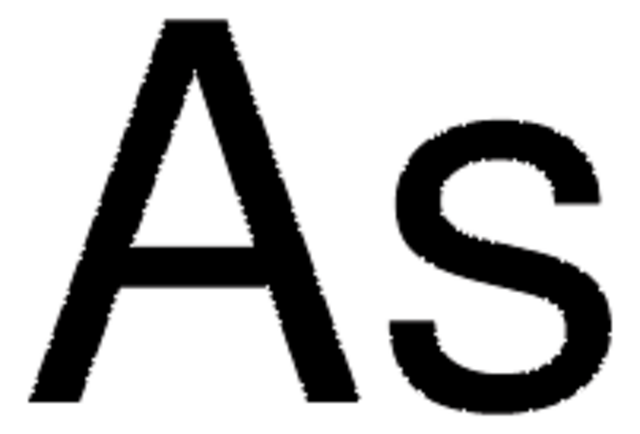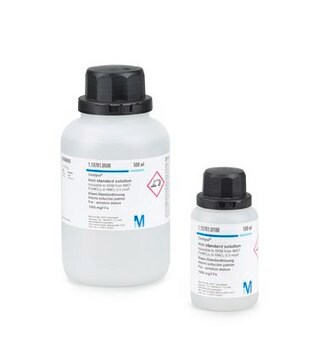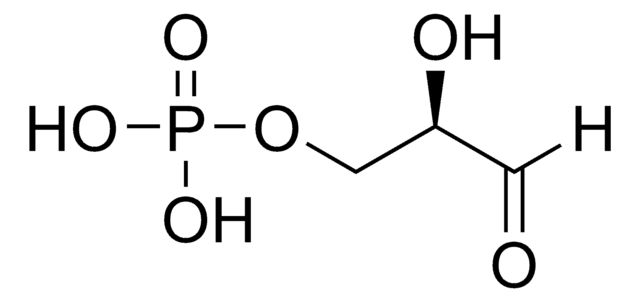Kluczowe dokumenty
S9663
Sodium arsenate dibasic heptahydrate
ACS reagent, ≥98%
Synonim(y):
Disodium hydrogen arsenate heptahydrate, di-Sodium hydrogen arsenate heptahydrate
About This Item
Polecane produkty
klasa czystości
ACS reagent
Próba
≥98%
98.0-102.0%
Formularz
powder
zanieczyszczenia
≤0.005% Insoluble matter
pH
8.5-9 (25 °C, 50 g/L)
ślady anionów
arsenite (As2O3): ≤0.01%
chloride (Cl-): ≤0.001%
nitrate (NO3-): ≤0.005%
sulfate (SO42-): ≤0.01%
ślady kationów
Fe: ≤0.001%
heavy metals (as Pb): ≤0.002%
ciąg SMILES
O.O.O.O.O.O.O.[Na+].[Na+].O[As]([O-])([O-])=O
InChI
1S/AsH3O4.2Na.7H2O/c2-1(3,4)5;;;;;;;;;/h(H3,2,3,4,5);;;7*1H2/q;2*+1;;;;;;;/p-2
Klucz InChI
KOLXPEJIBITWIQ-UHFFFAOYSA-L
Szukasz podobnych produktów? Odwiedź Przewodnik dotyczący porównywania produktów
Powiązane kategorie
Zastosowanie
Hasło ostrzegawcze
Danger
Zwroty wskazujące rodzaj zagrożenia
Zwroty wskazujące środki ostrożności
Klasyfikacja zagrożeń
Acute Tox. 3 Inhalation - Acute Tox. 3 Oral - Aquatic Acute 1 - Aquatic Chronic 1 - Carc. 1A
Kod klasy składowania
6.1A - Combustible acute toxic Cat. 1 and 2 / very toxic hazardous materials
Klasa zagrożenia wodnego (WGK)
WGK 3
Temperatura zapłonu (°F)
Not applicable
Temperatura zapłonu (°C)
Not applicable
Wykazy regulacyjne
Wykazy regulacyjne dotyczą głównie produktów chemicznych. Można w nich podawać ograniczoną liczbę informacji na temat produktów niechemicznych. Brak wpisu oznacza, że żaden ze składników nie znajduje się w wykazie. Użytkownik odpowiada za zagwarantowanie bezpiecznego i zgodnego z prawem stosowania produktu.
EU REACH Annex XVII (Restriction List)
Wybierz jedną z najnowszych wersji:
Certyfikaty analizy (CoA)
It looks like we've run into a problem, but you can still download Certificates of Analysis from our Dokumenty section.
Proszę o kontakt, jeśli potrzebna jest pomoc Obsługa Klienta
Masz już ten produkt?
Dokumenty związane z niedawno zakupionymi produktami zostały zamieszczone w Bibliotece dokumentów.
Klienci oglądali również te produkty
Nasz zespół naukowców ma doświadczenie we wszystkich obszarach badań, w tym w naukach przyrodniczych, materiałoznawstwie, syntezie chemicznej, chromatografii, analityce i wielu innych dziedzinach.
Skontaktuj się z zespołem ds. pomocy technicznej












